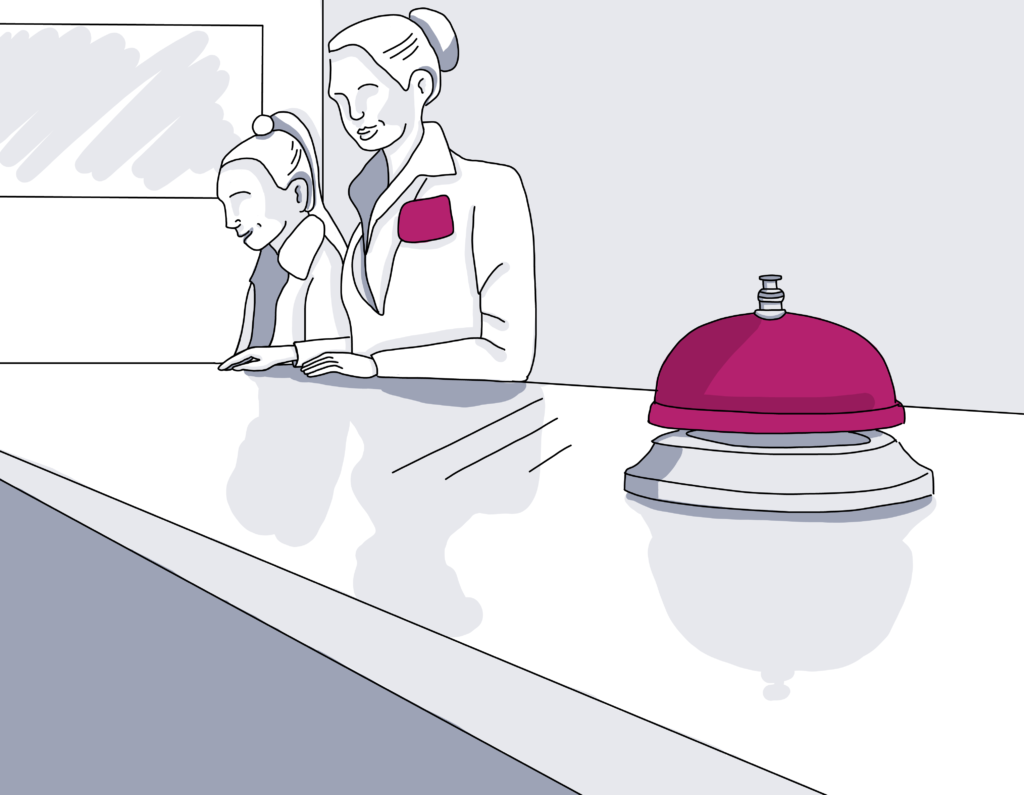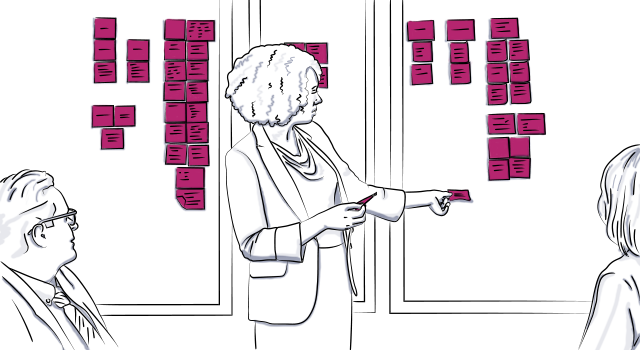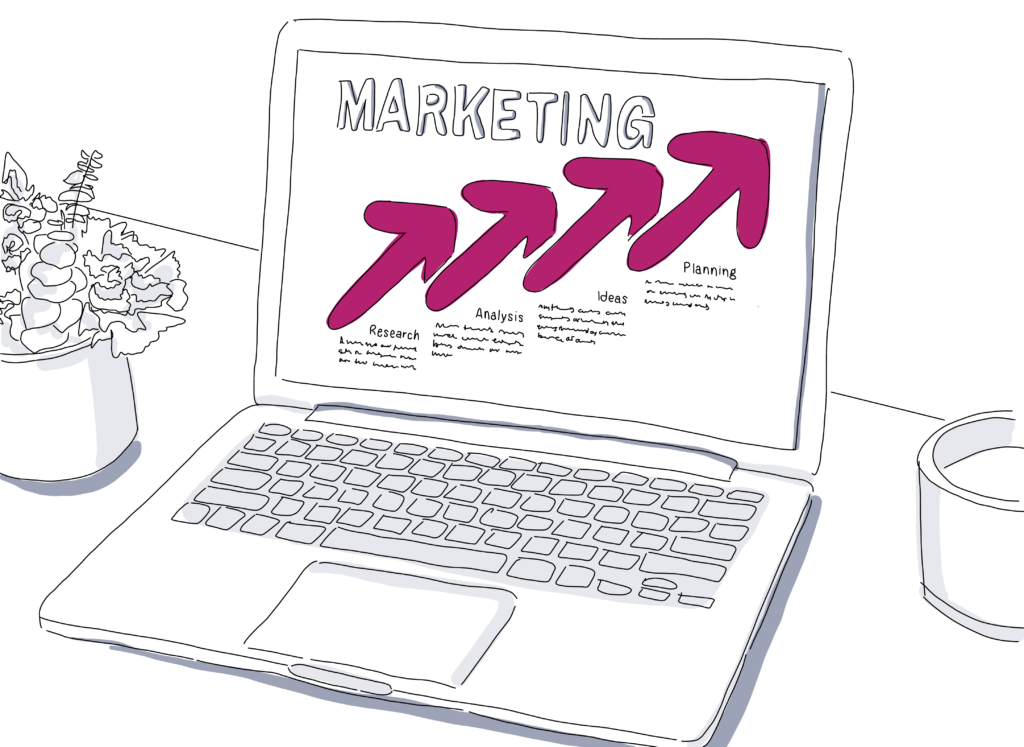
Friday Finds Trends: 10 Must-Know Hotel CRM Strategies to Boost Group Business
Have you heard? According to Hotel Management, 2019 is the year of data mining. That’s because of the unprecedented number of ways to harness data to grow business.
From booking timelines to event purpose to F&B purchase patterns, customer data is everywhere. As the amount of industry data grows more extensive than ever before, management companies need powerful hotel CRM strategies that can analyze and put this data to work for them.
Explore 10 great ways to grow profits with these hotel CRM strategies:

1. Understand customer profiles
From marketing to check-in to room service, big data helps hotels deliver a personalized experience for guests. Step one is having all of the data in one place to make it easy to build robust and detailed profiles of your customers.
Essential information to gather:
- Types of group business (e.g., are most of your group business customers there for weddings or corporate events?)
- Characteristics (e.g., age, whether customers are traveling with a large or small group)
- Behaviors (e.g., length of stay, use of in-hotel services)
- Needs (e.g., event space, group bookings)
- Expectations (e.g., concierge, continental breakfast)
Tag each type of information separately so you can analyze specific data sets. How much business does your hotel do with different groups? Are you consistently strong with weekend wedding parties? Or do you have a combination of weekday business meetings and weekend social gatherings (which you can layer to maximize the use of the ballroom)?
Segmenting your customers will allow you to see these trends.
The analysis isn’t done once you know the frequency of each segment. Analyze the amount of top-line revenue generated by each type, including via room rate, event space rental, F&B, spa services, merchandise, etc.
Then, subtract the costs of acquiring and serving those customers specifically, to yield the bottom-line profit to your hotel. (The bottom-line analysis is where returning customers shine”the cost of retaining them is significantly less than the cost of attracting new customers for the first time.)
Many iterations of this analysis will be required, as the answers will vary across hotels, and from season to season within the same hotel. Identifying the most profitable client sector at each hotel, in each season, means that a hotel can concentrate on services and amenities that appeal to that sector.
And when you keep track of the lead sources for group bookings, such as website, email, referral, agency, or repeat business, you can identify the most successful outreach channels. Then you can adjust the attention of your sales directors and target your ad spend accordingly.
2. Score group business leads
Group business is a powerful and profitable market segment, but hotels can lose a lot of time examining, comparing, and responding to RFPs. The hotel must balance room availability, meeting space and A/V needs, food and beverage spend, and other factors”sometimes sinking significant time into leads that are ultimately not a good fit.
Scoring sales leads helps hotels direct their efforts to the most profitable leads that are also the most likely to convert.
Cvent’s lead scoring software is one example of a powerful and easy-to-use lead scoring system. A hotel customizes the system with its distinct features, such as the number of rooms of various types, event spaces and sizes, and group ceiling, as well as priorities such as event fit, group size, and profit requirements.
Then the tool ranks sales leads and assigns them grades. Reports make it easy to see whether a group’s proposal would be a good fit for the hotel”and even suggests ways that the group business could become a better fit.
3. Automate communication
Automating communication in the lead-up to the event ensures the client has a smooth, streamlined experience. An automated system can send reminders about”and copies of”the signed contract and the signed BEO, for example. It can automatically follow up ahead of the deposit deadline and can deliver the rooming list to the right people at the right time.
Post-event communication builds on the groundwork already laid to increase repeat business. Some hotels automatically send a post-stay thank-you letter to their clients.
Looking over a longer timeline, people or groups who have stayed with you for a cultural or sporting event in the past might like to know that you miss them when the event rolls around again. Or you might set up an automated system to reach out to a planner during the planning stages of the next annual corporate retreat.
4. Grow repeat business
How important is repeat business? According to the Harvard Business Review, finding a new customer is between 5 and 25 times more expensive than keeping an existing one! From corporations planning mid-week retreats to wedding planners booking for a weekend, the most successful hotels target the groups that fit best with the property. Then, they nurture a good relationship.
We’ve already seen how data can help identify a property’s most valuable customers, score those leads, and improve communication. These factors not only help a hotel land first-time customers with maximum efficiency, but they also help convert those customers into returning business and enhance the customer experience.
Sales reps know which accounts should receive extra attention and can spend time building those relationships. Automated reminders can help sales reps keep in touch with valuable clients. Share news or information relevant and useful to them”especially as annual events roll around.
Fred Reichheld of Bain & Company (yes, the Net Promoter Score Fred Reichheld and Bain & Company) found that just a 5 percent increase in customer retention leads to a 25 percent increase”or more”in a business’ profits.
He suggests ranking marketing methods according to which attract the most loyal customers. And rewarding sales and marketing teams for landing customers who come back again.

5. Create personalized upselling opportunities
To keep upselling from being unwelcome, the expanded offerings should focus on providing a better experience for the customer. But that’s only possible when you have enough data to make a good guess about what the customer might want, and can present it to them at the right time.
For a wedding party, for example, consider an upsell to late checkout offered when the checkout timeline is top-of-mind, such as in an email the evening before checkout. (Bonus points if you see an opportunity to automate communication!)
For corporate groups, consider offering a tiered selection of meeting-room snacks, or a coupon for post-meeting snacks in the hotel restaurant.
This type of thoughtful attention to the needs of guests and groups also helps build brand loyalty. If the process is streamlined and feedback from the guests is positive, the event planner will be more likely to book with you again.

6. Optimize sales activities
Are sales managers proactively going after top-scoring leads? Is the sales strategy effective? Measure the success of the sales team’s activities by gathering data about which strategies are most effective.
For example, you can track which email templates work best. Or learn whether marketing targeted to one neighboring state yields more business than marketing targeted to another.
How long are the most productive phone calls, and what time of day are they placed? What time of the month do most contracts get signed, and how far ahead of the event date? With these details and answers, or others aligned with your business, you can optimize staff scheduling and marketing strategies, and hit sales goals.
7. Prepare efficient F&B
Efficient F&B is profitable F&B! Gather and analyze data so you know what to have on hand, and when to have it handy. Stay on top of need-to-know trends: meals that sell briskly through the holiday season, poorly selling side dishes, along with hot-ticket new F&B items getting a lot of requests.
This way you can stock your F&B so you don’t risk disappointing holiday groups and reduce food waste.
You can also track overlapping groups to optimize event menus. When menu items between the various groups align, you streamline food prep and also minimize food waste.
With common menus accessible through a CRM, the sales team can include the same menu in event proposals. They can easily share predefined meals for attendees with dietary restrictions.
8. Harvest F&B information
Are you targeting customers who like experiences or items they can’t get elsewhere? Run A/B tests with your patrons to see whether one signature item is more popular than another”and whether it is also profitable to your business.
Gather data on your customers’ favorites, too: does your contact for group business enjoy a particular dessert or drink? Have it in the room on arrival, or bring it out on the house.
Select-service hotels can also make F&B work for their bottom lines. According to hotel data from Hospitality Net, in recent years, select-service hotels with some F&B options have had stronger revenue growth than select-service hotels without any F&B offerings.
Coffeehouse-style lobby eateries and grab-and-go options were the winners. Revenue from these sources does not grow incredibly aggressively, but they do not have to be costly to operate.
9. Customize dynamic and personalized pricing
Done right, dynamic pricing can maximize hotel revenue and also produce happy customers. Many industries use dynamic pricing”think airline ticket prices that vary by booking window and Uber rides subject to ˜surge’ pricing. But the hospitality industry has a unique opportunity to involve customer data in dynamic pricing, helping them feel welcomed.
Knowing the breakdown of your best customers”i.e., customer segmentation”clarifies where you should direct your dynamic pricing and your marketing spend. Standard customer segmentation in the hotel industry includes solo travelers, couples, and groups. But you can drill down even further into types of groups or geographic.
You may find your group bookings come predominantly from athletic leagues or business associations. Based on your findings, you can develop marketing campaigns that reach out to these groups. Then, you can craft your dynamic pricing strategy.
You can also track the habits and the preferences of specific groups who reserve blocks of rooms in your hotel. As an example, consider an annual sci-fi event in your town that draws large groups from library-based book clubs in nearby states. Your research also reveals one particular group often books a block of rooms at your hotel”but they didn’t come last year.
In the lead-up to this year’s event, you can explore outreach marketing and special pricing for library groups. Send the group that skipped last year an email with a special event offer for returning guests: a competitive rate that represents a discount from the rack rate.
The goal? Increased overall business for the event, and the specific group’s business for this year’s event. And loyalty for future years, too! (Bonus personalized touch: Screen a sci-fi movie in an unused event room during a lull in the conference schedule.)
Dynamic pricing strategies must be pursued cautiously because they are problematic when done wrong”without properly utilizing customer profiles.
[Dynamic pricing] can backfire, which can alienate consumers and turn them into perpetual deal-seekers, notes Christopher Anderson, a professor at Cornell University’s School of Hotel Administration. Learn more about forecasting and dynamic pricing with Social Tables and Rainmaker’s forecasting ebook.
10. Increase account penetration
Measuring and increasing account penetration is all about data. Measure the amount of business a group does with your hotels so that you can expand it both ways. More meetings (frequency) and at different properties in your portfolio.
For example, do specific departments in a corporation do business with hotels outside your portfolio? Increase the percentage of the company’s overall hotel business that happens at your properties. Don’t hesitate to recommend a property in your portfolio that might be a great fit for certain functions.
For example, a company might host its sales team meeting at one property, and its holiday party at another. Keep your clients’ positive experiences with you at the forefront of their minds.
For frequent customers and corporate clients, use the account penetration data to negotiate LNR rates. That way, both you and the client are incentivized to increase the amount of business they do at your properties.
Next steps to drive revenue with a CRM:
Learn more about targeting hotel marketing to your best prospects, or request a demo of Social Tables’ Hotel Group S&C CRM software.

